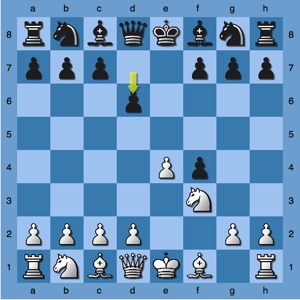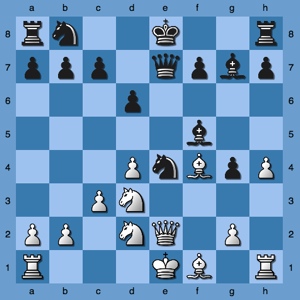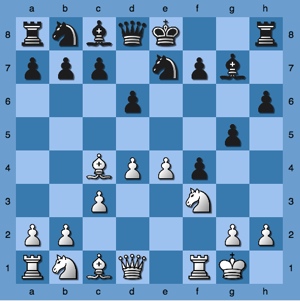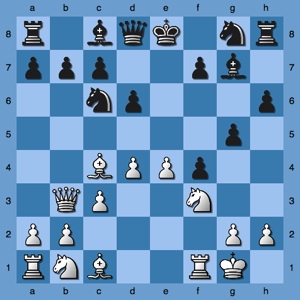
En la prensa de ayer y hoy hemos podido leer muchas noticias referidas a la vida de Bobby Fischer. Muchos de ellos escritos por periodistas con conocimientos de ajedrez y otros muchos escritos por el periodista de la redacción que sabe mover las piezas. Los primeros se centran en Bobby el genio excéntrico, los segundos directamente en las rarezas y miserias del personaje.
Como buenos amantes del ajedrez todos preferimos recordar al genio excéntrico. Y no faltan medios que recuerdan sus brillantes partidas y torneos. A modo de pequeño homenaje, vamos a permitirnos recordar como Bobby Fischer prácticamente extinguió el Gambito de Rey ¡a consecuencia de una derrota sufrida! Fue en Mar de Plata (Argentina) en Marzo de 1960 en su primer enfrentamiento contra Boris Spassky cuando Bobby aún contaba 18 años. Spassky y Fischer compartieron el primer premio del torneo, por delante de Bronstein. En su partida individual Spassky, con las blancas, jugó el Gambito de Rey. Fischer analizaría esta partida en su libro «Mis 60 memorables partidas». Admite que su gran equivocación es no cambiar las damas en la jugada veintitrés llegando a un final con peón de más. En el movimiento veinticinco empieza a sentirse incómodo pero sin llegar a imaginar que la posición negra se derrumbaría en cuatro movimientos más. Tres jugadas después, escribe, «sabía que estaba perdiendo una pieza, pero no podía creerlo. Tenía que jugar un movimiento más para comprobar que era cierto«. Y era cierto.
La derrota causó tal sentimiento en el joven Fischer que le llevó a escribir un artículo titulado «A Bust to the King´s Gambit» que se publicaría en el primer número de «American Chess Quarterly» en 1961. Con él prácticamente se erradicó el Gambito de Rey de la practica magistral. Aún faltaba más de una década para la portada de la revista Life.
A modo de pequeño homenaje os transcribo a continuación el artículo, en inglés original para no alterar la simplicidad de las palabras de Fischer. La notación está cambiada de la descriptiva original a la algebraica actual, y los diagramas los he añadido yo.
A BUST TO THE KING’S GAMBIT
by U.S. Champion Bobby Fischer
International Grandmaster
The King’s Gambit has lost popularity, but not sympathy. Analysts treat it with kid gloves and seem reluctant to demonstrate an outright refuatation. «The Chessplayers Manual» by Gossip and Lipschutz, published in 1874, devotes 237 pages to this gambit without arriving at a conclusion. To this day the opening has been analyzed romantically – not scientifically. Moderns seem to share the same unconscious attitude that caused the old-timers to curse stubborn Steinitz: «He took the beauty out of chess.»
To the public, the player of the King’s Gambit exhibits courage and derring-do. The gambit has been making a comeback with the younger Soviet masters, notably Spassky (who defeated Bronstein, Averbach and myself with it). His victories rarely reflected the merits of the opening since his opponents went wrong in the mid-game. It is often the case, also, as with Santasiere and Bronstein, that the King’s Gambit is played with a view to a favorable endgame. Spassky told me himself the gambit doesn’t give White much, but he plays it because neither does the Ruy Lopez nor the Giuoco Piano.
The refuatation of any gambit begins with accepting it. In my opinion the King’s Gambit is busted. It loses by force.
1.e4 e5 2.f4 exf4 3.Nf3 d6!
This is the key to a troublesome position, a high-class «waiting move.»

At Mar Del Plata, 1959, I played 3. … g5 against Spassky, but this is inexact because it gives White drawing chances in the ensuing ending: e.g., 4.h4 g4 5.Ne5 Nf6 6.d4 d6 7.Nd3 Nxe4 8.Bxf4 Bg7 and now 9.c3! (replacing Spassky’s 9.Nc3) Qe7 10.Qe2 Bf5 11.Nd2 leads to an ending where Black’s extra Pawn is neutralized by White’s stranglehold on the dark squares, especially Bishop on f4.

Another good try, but also inexact, is the Berlin Defense: 3. … h6 4.d4 g5 5.h4 Bg7 6.g3 g4 (also playable is: 6. … d6 7.gxf4 g4) 7.Nh2 fxg3 8.Nxg4 (8.Qxg4 loses to gxh2 9.Qxg7 Qxh4+ 10.Kd1 Qf6) 8. … d5 9.e5 Bf5 10.Bf4 where Black cannot demonstrate any advantage.
Of course 3. … d5 equalizes easily, but that’s all.

4. Bc4
4.d4 transposes, the only difference if White tries to force matters after 4. … g5 5.h4 g4 6.Ng5 (White also gets no compensation after 6.Bxf4 gxf3 7.Qxf3 Nf6; 6.Ng1 Bh6) 6. … f6! 7.Nh3 gxh3 8.Qh5+ Kd7 9.Bxf4 Qe8! 10.Qf3 Kd8 and with his King and Queen reversed, Black wins easily.
4. … h6!
This in conjunction with Black’s previous move I would like to call the Berlin Defense Deferred. By this subtle transposition Black knocks out the possibility open to White in the last note (to move 3).
5.d4 g5 6.O-O Bg7 7.c3
Necessary to protect the QP 7.Nc3 is always met by 7. … g4
7. … Nc6
Here there is disagreement as to Black’s best move. Puc and Rabar, Euwe, Keres, and most analysts give the text as the main line and mention 7…Ne7! in passing.

I think 7. … Ne7 is best because there is no reason why Black should not strive to castle K-side: e.g., 8.g3 d5! 9.exd5 fxg3 10.hxg3 (if 10.Ne5 gxh2+ 11.Kh1 O-O 12.d6 Qxd6 wins) 10. … O-O 11.Qb3 Qd6 12.Kg2 Nf5 wins.
There is little practical experience with this sub-variation.
8.Qb3

If 8.g3 g4 9.Nh4 f3 10.Nd2, Euwe and other analysts betray their soft-mindedness toward this opening by giving the inferior 10.Qb3? Bf6 11.Ndxf3 gxf3 12.Qxf3 – «unclear»!! This is yet another example of sentimental evaluation – after Qe7 followed by Bh3 and 0-0-0 Black wins easily. The Pawn on f3 is a bone in White’s throat so why force him to sacrifice when he must anyway?
10. … Qe7 is the strongest move.

In this last variation (instead of 10. … Nd2) white can vary with but then comes Nimzovitch’s beautiful winning line: Qe7 11.Nf5 Bxf5 12.exf5 (si 12.Qxb7 Rb8 13.Qxc6+ Qd7 14.Qxd7+ Bxd7 and Black has a winning endgame) 12. … O-O-O 13.Bxf7 Qe2 14.Qe6+ (14.Rf2 Nxd4! 15.Rxe2 fxe2 wins) 14. … Rd7! 15.Rf2 Qd1+ 16.Rf1 Qc2 17.Nd2 Nf6 threatening Nd8 18.Bg6 (18.Qb3 Qxb3 19.Bxb3 d5 with a winning endgame) 18. … d5 followed by Ne7 with a winning game for Black. )
8. … Qe7 9.h4 Nf6
Again theoretical disagreement. Perfectly good is 9. … g4! 10.Bxf4 (forced, not 10.Nfd2 Nxd4 11.cxd4 Bxd4+ etc.) 10. … gxf3 11.Rxf3 given by analysts again as «unclear,» but after Nf6 followed by 0-0, White has nothing for the piece.
10.hxg5 hxg5 11.Nxg5 Nxe4

A wild position, but Black is still master.
12.Bxf7+
The game is rife with possibilities if 12.Nxe4 Qxe4 13.Rxf4 Qe1+ 14.Rf1 Qh4 15.Bxf7+ Kd8 16.Qd5 Ne5! 17.dxe5 Bxe5 (threatening Bh7 and mate) 18.Rd1 Qg3 wins, owing to the threat of Rh1+
12. … Kd8 13.Nxe4

Not 13.Ne6+ Bxe6 14.Qxe6 Qxe6 15.Bxe6 Nxd4!
13. … Qxe4 14.Bxf4
14.Rxf4 also loses to Qe1+ 15.Rf1 Rh1+ 16.Kxh1 Qxf1+ 17.Kh2 Qxf7 etc.
14. … Nxd4
And Black wins …
Of course White can always play differently, in which case he merely loses differently.

Lo mejor de todo es:
Of course White can always play differently, in which case he merely loses differently.
Sólo esa frase ya merece dejar todo el texto en inglés 😀